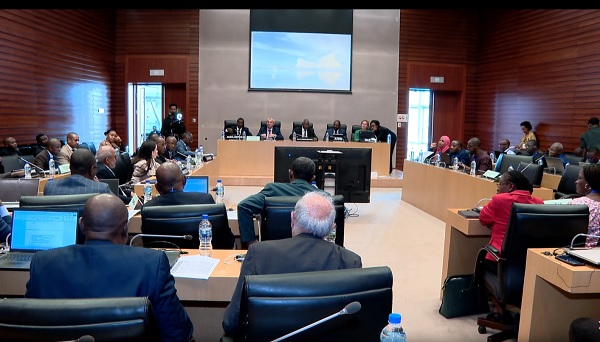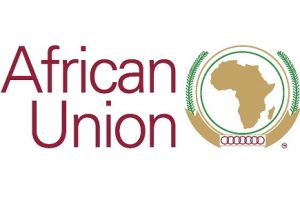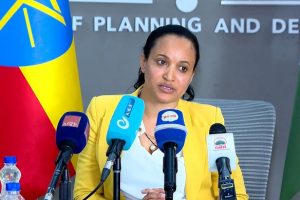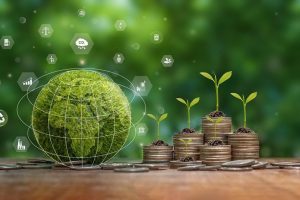
Looking at the broader global landscape, Africa is one of the few regions where energy demand is steadily growing while many other continents are stabilizing. Africa’s population is expected to double by mid century, and urbanization is accelerating. Meeting future demand sustainably will require not only scaling renewable generation but rethinking consumption patterns, efficiency standards, and industrial use. Africa Electricity Market (AfSEM) provides the blueprint for deploying renewables at scale to meet these demands.
Across Africa, renewable energy development is gathering pace. Solar photovoltaic (PV) installations are proliferating, with large-scale solar parks taking shape in Egypt, South Africa, Morocco, Kenya, and Ethiopia. Off-grid solar mini grids and home systems are empowering remote communities, creating employment, and enabling digital connectivity. Wind farms are emerging in coastal and inland zones—from the expansive Lake Turkana Wind Power Station in Kenya to Moroccan wind belts.
Meanwhile, hydro projects remain central in places like the Democratic Republic of Congo’s Inga dams, Ethiopia’s Grand Renaissance Dam, and Zambia’s Kafue Gorge expansions. Throughout the rift valley, geothermal capacity is increasing rapidly—Kenya has already opened multiple plants that drive its grid. Together, these projects contribute to about 30 percent of Africa’s total installed electricity generation, and the figure continues climbing.
Yet, scaling renewables requires more than generation capacity. Modern energy systems demand enhanced transmission infrastructure, smart grid integration, and demand side management. AfSEM addresses these needs by incentivizing investment in high voltage transmission lines, interconnectors between countries, and digital platforms that support real time electricity trade. Energy storage, battery systems, and pumped storage schemes are also becoming more visible in national investment plans, helping manage variability in solar and wind generation and providing grid stabilization.
Financing, of course, remains a challenge. While project-level financing is accessible, domestic capital markets within Africa are often underdeveloped. This is where blended finance models supported by the EU, World Bank, and AfDB become vital—providing risk warranties, currency hedges, and long-term loans.
These instruments can de-risk investments and attract private developers who might otherwise be sidelined. Public-private partnerships (PPPs) are proliferating, especially in utility-scale solar, wind, and storage installations. In many countries, independent power producers (IPPs) are operating alongside national utilities, supported by standardized power purchase agreements (PPAs) underpinned by legislative certainty.
A regional electricity market further amplifies financing opportunities. A financially integrated market offers greater liquidity, larger customer bases, and more robust price signals—all of which foster investor confidence. Small countries benefit from being part of an interconnected pool, and regional infrastructure projects become more feasible. Moreover, AfSEM can coordinate policies with continental climate goals—such as the African Union’s Agenda 2063, the Paris Agreement, and the UN’s Sustainable Development Goals—creating a coherent policy environment that appeals to impact investors.
Today marks a pivotal moment in Africa’s journey toward a clean energy future, declared Kamugisha Kazaura, a distinguished leader in continental energy integration. He spoke of laying the “institutional and operational foundations” for the implementation of a unified—a transformative initiative destined to deliver clean, reliable, and affordable electricity across the continent.
At the same time, he extended heartfelt appreciation to the European Union for its unwavering technical and financial support since the program’s inception in 2015, particularly facilitated through the Global Technical Assistance Facility. Designed to enhance energy security, sustainability, and competitiveness across African Union Member States, AfSEM emerges as a cornerstone of Africa’s renewable energy agenda, one that is driven by collaboration, ingenuity, and a shared vision of sustainable prosperity.
Since it was first conceived a decade ago, AfSEM has been evolving from an ambitious vision into operational clarity. The impetus behind this continental market is obvious: Africa suffers from both an acute supply deficit and a highly fragmented electricity infrastructure. Access to electricity remains stubbornly low in many regions; approximately 600 million people still live without it. This hinders socio-economic development, burdens health outcomes, and restricts educational opportunities.
The goal of AfSEM is to dismantle these systemic obstacles by integrating national grids, harmonizing regulations, modernizing infrastructure, and enabling cross-border power trade. Under this unified system, countries blessed with abundant renewable resources—whether solar in the Sahel, hydro in Central and Eastern Africa, wind in North and Southern Africa, or geothermal in the Rift Valley—can share surplus energy with neighbors, reducing cost volatility and energy scarcity.
Kazaura’s words underscore the magnitude of what’s at stake. A market that is regulated, interconnected, and equitably governed could yield multiple dividends at once: clean and efficient power delivery, resilience against climate shocks, and better cost-competitiveness. Equally important, AfSEM can amplify Africa’s influence in the global energy ecosystem. A robust continental power market, leveraging renewables at scale, can attract investment, stimulate industries, and reinforce the link between infrastructure and economic growth. In practice that could translate into faster agricultural mechanization expanded manufacturing, and more integrated supply chains—catalyzing growth across sectors.
Critical to AfSEM’s success is institutional strength. Harmonizing diverse energy regulations across 55 AU Member States is not merely a bureaucratic exercise—it is central to unlocking investor confidence and catalyzing innovation. This encompasses standards for power generation and distribution, legal frameworks for trade, transparent tariff mechanisms, and dispute resolution systems. Establishing independent power exchanges and regional coordination centers will further enhance operational efficiency. Taken together, these measures can weave a unified system that is accountable, scalable, and capable of operating under stress—be it a sudden demand spike or a natural disaster.
From the beginning, AfSEM’s progress has depended on vital external support. The European Union’s involvement has been instrumental since 2015. Through the Global Technical Assistance Facility, the EU has offered financial backing alongside expertise in technical design, policy frameworks, stakeholder coordination, and logistical rollout. The EU’s role extends beyond funding, encompassing guidance on procurement standards, regulatory compliance, and capacity building. This partnership has enabled Africa’s experts to refine domestic policies, pilot cross border interconnections, and assume leadership in administering the continental market.
The EU is not alone. Other critical partners include the African Development Bank (AfDB), the World Bank, the German Agency for International Cooperation (GIZ), the U.S. Power Africa initiative, and multilateral climate funds. Each brings distinct value—bankable financing, matched grants, operational experience, and climate-related capacity. The synergy of this multilateral coalition is powerful. It allows for blended financing models, combining public, private, and concessional capital to differentially structure projects. The result: accelerated grid expansion, faster electrification of rural regions, and greater private sector participation.
As AfSEM progresses, equitable access must remain a central concern. It is not enough to wire urban centers; rural and off-grid communities must also be connected. Here, distributed renewable technologies—solar home systems, minigrids, and biogas—play a complementary role. Initiatives empowering youth, women-led energy startups, and local innovators are critical. Access to electricity enables new economic opportunities: powering agro-processing, supporting mobile health clinics, and enabling digital education platforms. In these spaces, the combination of AfSEM’s large-scale energy integration with grassroots solar solutions can deliver transformative results.
A key differentiator for AfSEM compared to past attempts at regional integration is Africa’s growing institutional capacity. Pan‑African bodies like the African Union Commission and regional economic communities (such as ECOWAS, SADC, EAC, and ECCAS) are deeply involved in advancing regulatory alignment and implementing interconnection projects. National regulators and utilities are increasingly autonomous and equipped to work within continental frameworks. The EU and other partners have actively supported these institutions with training programs, system design assistance, and peer learning networks—strengthening capacities across regulatory, commercial, and technical domains.
While political resolve remains strong, sustaining the process demands continuity and coordination. Africa faces changing governance landscapes, and partnerships must build beyond individual leaders or administrations. The continuity of reforms, regulatory tenacity, and financing mechanisms must be insulated from political turnover. Here, supranational agreements, regional frameworks, and long-term financing deals help safeguard momentum.
A unified electricity market also creates a foundation for the integration of other sectors. It enables freer trade in other goods and services, promotes regional value chains, and fosters industrialization. Electricity exports can be exchanged for imports; cross-border energy sheds light on how border infrastructure like roads, customs, and telecom must evolve. Digitalization of energy markets can be paired with digitalization of finance, education, and e‑commerce. In short, AfSEM may become a prime developmental driver supporting Africa’s next stage of transformation.
In recognition of these dynamics, international financial institutions and donors have committed billions toward African energy infrastructure. Yet much more is needed to fully harness Africa’s potential. Closing the investment gap will require new funding mechanisms, carbon markets, green bonds, and climate equity funds. It will demand commitments not just to capital, but to capacity, regulatory sophistication, and institutional continuity.
In sum, today’s declaration by Kamugisha Kazaura reflects both the urgency and the promise of Africa’s energy transition. With AfSEM taking shape, supported by long-term partnerships led by the EU and a broader global coalition, Africa stands poised to leapfrog legacy energy systems. The potential payoffs—energy access for hundreds of millions, climate resilience, green growth, and continental unity—are immense. Africa’s path ahead is clear: a clean, interconnected, and inclusive energy future built not behind closed doors, but through collective effort, innovation, and shared vision.
As the institutional and operational foundations for AfSEM roll out, attention will now turn to implementation—grid connections, regulatory integration, financing arrangements, and public engagement. Yet the momentum is real. The aspiration of a unified electricity market reflects more than sectoral reform; it embodies Africa’s ambition to be a player in global energy transformation. Supported by European expertise, financing, and technical partnership since 2015, and reinforced by development banks, private sector actors, and local innovators, AfSEM may soon become Africa’s greatest leap yet into a sustainable, electrified future.
BY DANIEL ALEMAYEHU
THE ETHIOPIAN HERALD WEDNESDAY 2 JULY 2025





